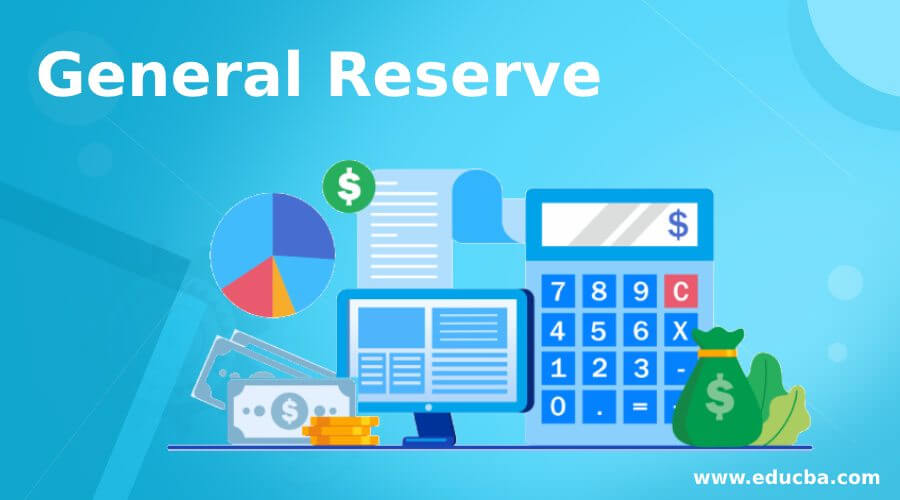Updated July 19, 2023
Definition of General Reserve
General reserve refers to the amount of profit that the company keeps aside in the form of reserves, or we can say these are the earnings of the company that the company wishes to save for meeting future uncertainties where the future uncertainties include the meeting contingencies, payment of dividends, increasing the working capital, offsetting future losses, strengthening the liquid resources, etc.
Explanation
General Reserves do not have any specific use but can be used for any purpose. The companies are not bound to create such Reserves, and it is the company’s discretion to accumulate the total amount of reserves that they want to accumulate. Also, there is no prescribed percentage for creating reserves. The reserve amount is reported on the equity and liabilities side of the balance sheet under the head reserves and surplus.
Example of General Reserve
During the financial year 2019-20, Company X earned profits of $500,000 from its business. The company has decided to transfer 5% of its total earnings which can be used for any purpose. A special reserve will get 4% of the firm’s earnings, which the company’s management will spend for a defined objective.
Solution:
In the above case, out of the total profits of $500,000, the company decided to transfer 5% of the company’s profits, which can be used for any purpose. As a result, the sum that will be transferred to the general reserve is:
- = Total Profits * % of transfer
- = $500,000 * 5%
- = $25,000
The remaining 4% of the profits will be put into a reserve that has been set aside, particularly for that use. The amount transferred to the specific reserve will be reported separately as a component of the specific reserve rather than being included in the general reserve.
When are General Reserves Going to be Established?
The company doesn’t need to create the reserve and transfer the amount. However, if the Articles of Association of the company state that it has to transfer a specific amount of its profit to the general reserve account before distributing the dividend, it has to transfer such amount to the General Reserve Account.
Balance Sheet
The company’s reserve account created will be displayed in the liabilities section of the company’s balance sheet under the head “Reserve and Surplus.”
General Reserve vs Retained Profit
- The creation of the reserves helps accumulate funds to meet future contingencies.
- To create a general reserve, a company typically transfers a percentage of its current year’s profits to the reserve before distributing dividends to shareholders.
Benefits
Benefits are provided and discussed below-
- Creates additional working Capital: It provides additional working capital to the organization, allowing it to expand its business segments or activities as needed and seize new opportunities.
- Permits distribution of Dividends: A company needs to keep its stakeholders’ investment in the company intact. The one thing which is very important in this regard is to distribute dividends uniformly, which is also challenging to the company. The accumulated Reserve helps the company in case of difficulties in distributing the prize by equalizing the dividend rate.
- Protection from future contingencies: General reserve helps the company in meeting future obligations or losses and acts as a shield in protecting the company from future contingencies.
Disadvantages
Disadvantages are provided and discussed below-
- True financial position cannot be judged: In the event of a loss or a cash crisis, the Company may use the funds in the General Reserve. As a result, the company’s financial situation appears strong regarding payment efficiency.
- Decreases the dividend: Prior to awarding any rewards, a corporation uses profits that are accessible to equity owners when it sets up its general reserve.
- Proper utilization of funds: Appropriation of these funds may be questionable, which could lead to mismanagement or inefficient use of the funds.
Conclusion
Thus, the general reserve can be the amount the company can spend on whatever needs come up. Setting away a portion of a company’s profits from its regular business operations creates a general reserve.
Recommended Articles
We hope that this EDUCBA information on “General Reserve” was beneficial to you. You can view EDUCBA’s recommended articles for more information.




